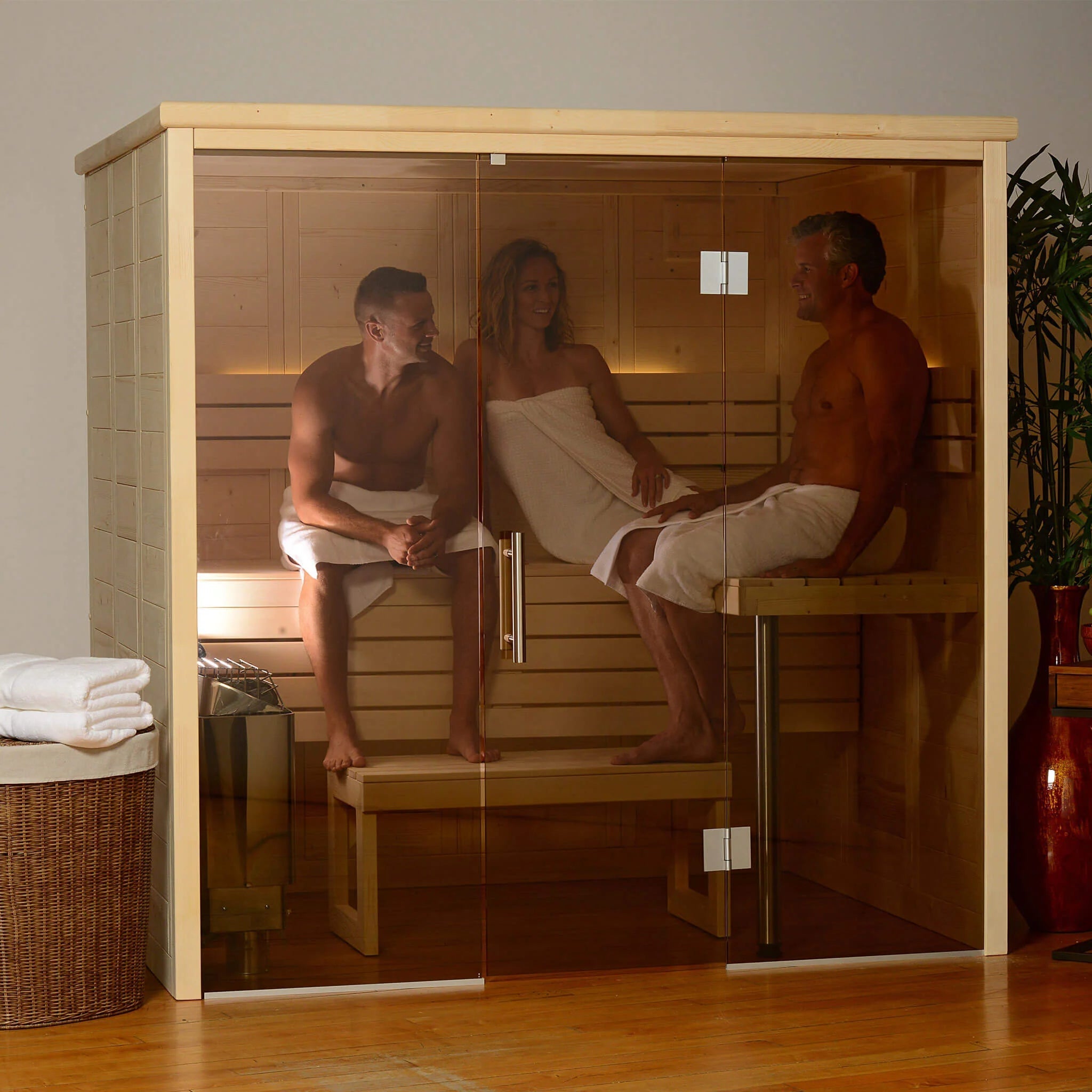The Best Guide To Traditional Sauna
The Best Guide To Traditional Sauna
Blog Article
Not known Details About Traditional Sauna
Table of ContentsTraditional Sauna Fundamentals ExplainedThe Main Principles Of Traditional Sauna The Facts About Traditional Sauna UncoveredThe Ultimate Guide To Traditional SaunaFacts About Traditional Sauna Uncovered
Most of the weight lost in a sauna is water loss and is re-gained upon rehydrating. Without a doubt sauna can be a crucial component of a healthy weight loss program. To take a look at the distinctions between standard and IR saunas, I will certainly divide these right into proven, academic, and fabricated differences.Hence, the most popular factor in the saunawhich goes to the ceiling directly over the sauna heateris normally between 185 and 190 F. Claims that a typical sauna surpasses 200 F is simply not true and not applicable for electric saunas offered in the United States. The temperature level for a far-infrared sauna is normally established in between 120 and 140 F; however, unlike the standard sauna, the objective in and IR space is not to achieve a heat.
Due to the fact that of this, the temperature level difference is nearly irrelevant, considering that profuse sweating leads to both sauna kinds, however the approach of warming the body is various. In an IR sauna the bather will feel warm and will certainly sweat profusely, but at much lower temperature levels (Traditional Sauna). Hence, if the objective is to invest longer time periods in the sauna, the IR sauna is a great option
When a typical sauna has been properly heated, the sauna walls are warm, the air temperature level has actually attained established temperature and the rocks are extremely warmed. As an interesting side note, the heated walls and the rocks are releasing far-infrared warmth, incorporated with the warmed air, to develop an "wrapping up warm".
Traditional Sauna Fundamentals Explained

When the high temperature is accomplished, the components cycle on and off to preserve the high temperature level. The majority of traditional sauna users appreciate pouring water over the rocks to produce steam to raise sauna moisture degrees. The advantages of pouring water over the rocks include: making the space much more comfy, moistening the nasal flows, and allowing the use of aromatherapy by blending important oils with the water.

When the power enters the body, it triggers the body Check This Out temperature level to enhance and inevitably leads to sweat. In an infrared sauna it is essential for the emitters/heaters to stay on practically constantly. Since there is no mass of rocks to maintain warmth, the sauna will cool down if the emitters shut off.
As stated above, the sauna bather in an infrared space wishes to place himself in front of running emitters to get maximum gain from the heat. The home heating time for the two rooms can be extremely various, depending on just how the rooms are utilized. For a traditional sauna, a bather ought to permit 30-40 minutes for the area to achieve a preferred temperature level and to properly pre-heat the rocks.
Excitement About Traditional Sauna
A well built sauna will usually accomplish a temperature of 150-160 F in about 30-40 minutes. For hotter temperatures, the area might require to heat for a longer duration.

Standard saunas tend to be larger (thus make use of even more electrical energy) than infrared saunas, although typical saunas are why not check here definitely available in one and two individual sizes. For a two-person conventional sauna, 5x6 or 5x7 dimension is most popular. The leading bench can comfortably seat two or 3 individuals and is additionally enough time to relax during the sauna session.
See This Report on Traditional Sauna
The average expense per kWH of electricity in the U.S. is around $0.11, so a 4.5 kW heating system will set you back around $.50 to compete one hour, if the heating system runs constantly for one hour. Usually a sauna heating system will certainly compete 75% of the initial hour and 50% of succeeding hours on since the components cycle once the established temperature level is attained.

There is a check hardly ever gone over difference in the social experience between the 2 spaces. While our culture has actually shed a few of the social benefit of the standard sauna experience, it can be extremely socially rewarding (Traditional Sauna). From family members time in the sauna, to heart-felt conversations with significant others, to sauna partiesthe conventional sauna experience can lead to intimate mingling
The Buzz on Traditional Sauna
A lot of greater end infrared rooms include colored light therapy, audio systems and full-glass fronts.
Report this page